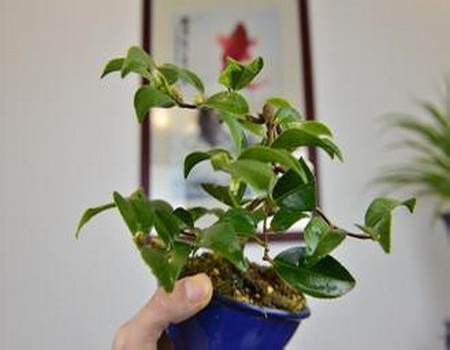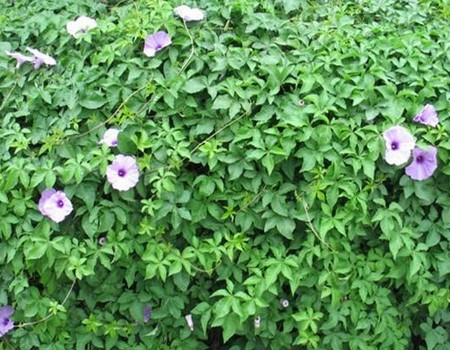Flowering time and Culture method of Cymbidium
Laughing Clivia is a kind of Clivia, flowers bloom, each flower was bell-shaped drooping, like bow to people smile, hence the name "Laughing Clivia." Laughing clivia elegant solemn, long and narrow leaves, orange yellow flowers, open droop, barrel, is the layout of the venue during the Spring Festival, decorate the hotel, beautify the family environment potted flowers, potted mainly, winter and spring flowers, summer and autumn leaves, dust collection effect is obvious. Let's take a look at the flowering time and breeding methods of Laughing Clivia.
When does Laughing Clivia bloom?
The growth period of Laughing Clivia is very long, from a seed to flowering, it takes 8 to 10 years, or even longer. Due to the characteristics of flowers, it is very easy to confuse them with garden clivia. Because its growth cycle is very long, so boldly speculated that before once popular in China,"hanging smile Clivia" may be garden Clivia.
How to raise Laughing Clivia?
1. Soil
Clivia suitable for humus-rich soil, this soil permeability is good, good water permeability, and fertile soil, with slightly acidic (PH6.5). In humus. Infiltration of about 20% sand is conducive to root cultivation. When cultivating, the pots are gradually enlarged with the growth of plants. When cultivating annual seedlings, 3-inch pots are suitable. The second year for 5-inch pot, after 4 1~2 years for a larger pot, pot change can be carried out in spring and autumn.
2. Light
During the whole cultivation process, try not to let the plants be exposed to direct sunlight. It can be done under scattered sunlight for about four hours a day. Too strong light will narrow the leaves. Laughing Clivia avoid high temperature and hot sun radiation in summer, should be placed in a higher humidity and shade environment, pay attention to ventilation. In winter, Clivia chinensis is afraid of cold, so it should be moved indoors and placed in a well-lit position. The room temperature can be safely overwintered at about 5℃. If there are conditions, it is best to keep the ambient temperature stable between 15 and 25℃.
3. Watering
Clivia nigra has developed fleshy roots, which can store more water and have certain drought resistance. General experience that the soil moisture content of about 30% is appropriate, master three pots of soil surface when dry and then irrigate, winter 3~5 days irrigation once, spring, autumn can be 1~2 days irrigation once, summer appropriate increase watering times. Less water is needed at seedling stage, more water is needed at flowering stage. Don't pour water on the leaves when watering to prevent them from rotting. Found that there is dust on the leaves, available soft cloth to wipe the leaves, also available soft brush, do not wash a lot of water. Potted plants should not be watered more than wet. May to June plum rainy season, prevent rain shower, so as not to root, leaf disease rot. Summer high temperature period pay attention to spray cooling.
4. Fertilization
Laughing clivia like fertilizer, but too much fertilizer will cause rotten roots, in addition to applying fertilizer, topdressing should be used "thin fertilizer more" method. Apply base fertilizer when changing pots. Spring, autumn two seasons every other month after the fermentation of solid fertilizer, and then apply liquid fertilizer once a week, it is best not topdressing, the whole plant can rely on the accumulation of nutrients in spring and autumn slow growth, when applying solid fertilizer, open the pot soil, buried in the soil 2 cm deep, do not directly contact the roots to avoid burns; liquid fertilizer, young seedlings with fertilizer: water 1:40 is better, large, medium flowers 1:20 is better, fertilization time in the morning is appropriate, avoid splashing on the leaves, after applying liquid fertilizer should be timely watering 1 time, but not too much water, on the one hand dissolved fertilizer, on the other hand, the new fleshy roots can be grown, washed to prevent damage to new roots. Different seasons, fertilizer types have some emphasis. Winter, spring partial application of phosphorus, potassium fertilizer, such as bone meal, etc.; autumn partial application of nitrogen fertilizer, such as bean cake water; summer common root topdressing, with 0.1% potassium dihydrogen phosphate or calcium superphosphate spraying leaves, root topdressing ~ year can be carried out.
5, pruning
After flowering, those who are not prepared to keep seeds should cut off the flowers in time.
6. Change the basin
Flowering plants can be changed every spring after flowering, try to keep the protective soil when changing pots, trim branches and aged root systems, apply enough organic fertilizer to the bottom of the pot, irrigate enough root water after planting, shade treatment, keep the pot soil moist without ponding, and manage normally after slowing down seedlings.
7. Disease and pest control
(1) Sunburn: All leaves turn yellow, caused by direct sunlight for a long time in summer. Shade cultivation should be adopted, and yellow leaves can be cut off.
(2) Root rot: Its symptoms are yellow leaves from the leaf tip, and new leaves occur less or no new leaves. The reason is excessive water on the basin or planting bacteria from the root cut wound infiltration caused. The solution is to carefully dig out the plant from the soil and check if a small part of the root system is rotten, cut off the rotten part, apply sulfur powder or plant ash to the cut surface, and then replant it with new soil. If most of the roots rot, then cut off all the roots from the root neck, disinfect them with 200 times diluted copper sulfate (CusO4) aqueous solution, and then insert them into river sand. The basin sand is kept moist and dry, and placed in a ventilated and shaded place to make them take root again.
(3)"clip arrow": Laughing Clivia often occurs in the cultivation of pregnant buds after the flower scape can not be extracted, can not flower phenomenon, known as "clip arrow". This is related to temperature and fertilizer. The main reason for the arrow clip is that the temperature is not suitable. Most of the flowering period of Clivia verticillata is from December to March of the following year. At this time, if the room temperature is lower than 14℃, the temperature difference between day and night is very small, and the flowers grow slowly after being extracted, causing the phenomenon of arrows. The solution is: when flowers and plants outcrop, should immediately raise the room temperature to more than 20℃, night room temperature is best at about 12℃, so that the temperature difference between day and night to reach more than 18℃, can prevent arrows. It can also be used to inject warm water into the soil at 25℃. When the room temperature is too low, plastic film can be used to make a frame cover outside the flowerpot and placed in the sun to increase the temperature to urge the arrow.
(4) Anthracnose: This disease mostly occurs in rainy and humid seasons, and the disease spots are mostly at the edge of middle and lower leaves. At the beginning of the disease, wet brown spots appeared on the leaves, and then gradually. Gradually expanded into oval spots, and in the spots produced concentric ring, late spots dry, scattered on many small black spots. Control methods, one is late autumn or early spring to remove dead branches. Defoliate leaves and cut off diseased branches in time and burn them together; spray 65% zinc 600 times solution for protection before onset; apply fertilizer and water reasonably, pay attention to ventilation and light transmission; spray 50% carbendazim diluted 500~800 times in the early stage of onset, or spray 50% thiophanate solution, or spray 75% chlorothalonil diluted 600~800 times.
Time: 2019-06-01 Click:
- Prev

Culture methods and matters needing attention of potted tea plum
Camellia oleifera has a variety of colors, long flowering period, magnificent color, light and elegant, beautiful tree shape, most branches expand horizontally, full posture, and a large amount of flowers, so it is very suitable for pot appreciation, and it is one of the ideal flowers to watch flowers in winter. Many people wonder whether Camellia or plum blossoms
- Next

Culture method of Golden Dragon with five claws
The five-clawed golden dragon is a common trailing flower in summer and autumn. it is a good material for vertical greening and small flower rack, and can be used as a climbing rattan material at the edge of the hedge. The five-clawed golden dragon is a perennial herb with twining stems, grayish green and often small verrucous protuberances. Leaves alternate, digitally 5-parted, lobes elliptic-lanceolate, entire. A single flower grows in leaf axils
Related
- Fuxing push coffee new agricultural production and marketing class: lack of small-scale processing plants
- Jujube rice field leisure farm deep ploughing Yilan for five years to create a space for organic food and play
- Nongyu Farm-A trial of organic papaya for brave women with advanced technology
- Four points for attention in the prevention and control of diseases and insect pests of edible fungi
- How to add nutrient solution to Edible Fungi
- Is there any good way to control edible fungus mites?
- Open Inoculation Technology of Edible Fungi
- Is there any clever way to use fertilizer for edible fungus in winter?
- What agents are used to kill the pathogens of edible fungi in the mushroom shed?
- Rapid drying of Edible Fungi

